Realistic fiction books for kids hold a special place in literature as they mirror the real world while igniting the imaginations of young readers. These books are grounded in reality, often tackling everyday situations and relatable characters that children can see themselves in. The stories within this genre provide a unique opportunity for kids to experience the world from different perspectives, enhancing their empathy and understanding of diverse life scenarios.
Children’s realistic fiction covers a range of topics from family dynamics and friendships to personal growth and social issues. The authenticity of the narratives helps children connect with the characters and the challenges they face, which could be as mundane as conquering a fear of the dark or as complex as coping with loss. Through these stories, young readers learn valuable life lessons about resilience, kindness, and the significance of choices, all embedded within accessible and engaging plots.
The appeal of realistic fiction for young audiences lies in its balance of relatability and narrative appeal. While fantasy and adventure genres take readers to far-off worlds, realistic fiction draws in children with familiar settings and plausible events, perhaps even inspiring them to write their own stories drawn from the wells of their experiences and observations. The genre serves not only as a doorway to explore the nuances of human experiences but also as a tool for literacy and cognitive development, aiding kids in honing their language skills and critical thinking.
Reader's Roadmap
What Is Realistic Fiction?
Realistic fiction is a genre that mirrors real life with fictional stories that could actually happen to people.
Defining the Genre
Realistic fiction features narratives that are grounded in reality, without elements of fantasy or science fiction. They portray authentic characters in believable situations. This genre is often chosen for kids because the plots are relatable and the experiences of the characters reflect those that readers could encounter in their own lives.
Elements of Realistic Fiction
Within realistic fiction, certain elements are crucial:
- Characters: They should be complex and multi-dimensional, with recognizably human flaws and virtues.
- Setting: Represents real places and time periods; it’s a world that readers can recognize.
- Plot: Grounded in everyday problems or experiences that readers, especially kids, can understand and relate to.
- Themes: Often mature and thought-provoking, these themes may include friendship, family dynamics, personal growth, or social issues.
Realistic Fiction vs. Other Genres
Realistic fiction distinguishes itself from other genres with its focus on plausibility and everyday experiences, particularly in contrast to:
- Fantasy: Contains magical or supernatural elements that are not found in the real world.
- Science Fiction: Typically includes advanced technology, space exploration, and other speculative concepts.
- Historical Fiction: Though similar in realism, this genre is set in the past, with a strong emphasis on accurately depicting historical context.
Popular Realistic Fiction Books for Kids
Realistic fiction offers kids relatable storylines and characters that mirror real-life experiences. This genre, popular among young readers, covers a broad spectrum from tried-and-true classics to the latest bestsellers.
Classics That Have Stood the Test of Time
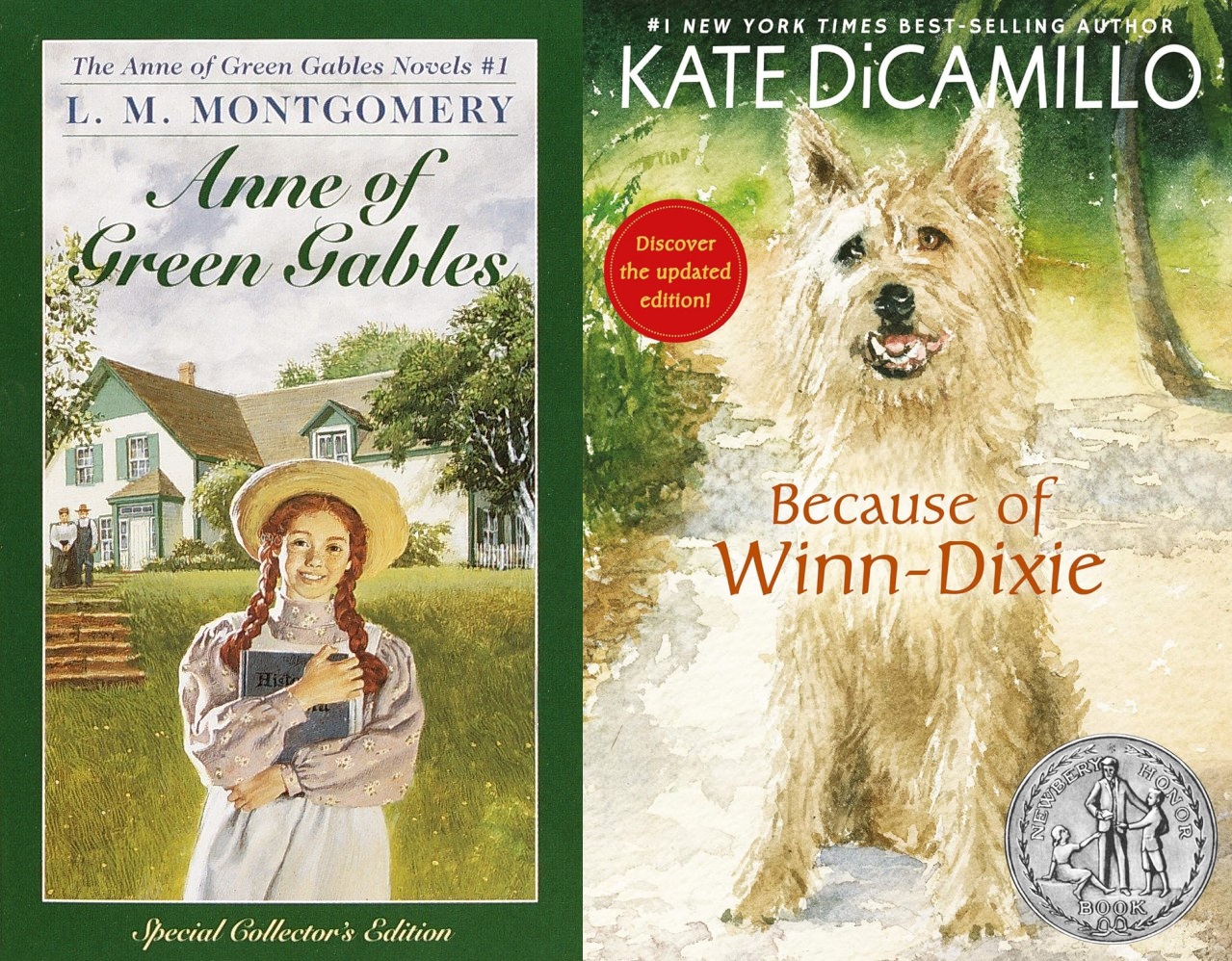
“Anne of Green Gables” by L.M. Montgomery
A timeless favorite, this novel follows the spirited adventures of Anne Shirley, an orphan sent to live with siblings Matthew and Marilla Cuthbert on Prince Edward Island.
“Because of Winn-Dixie” by Kate DiCamillo
A heartwarming tale about a young girl named Opal who, with her dog Winn-Dixie, learns about friendship and acceptance.
Modern Classics and New Releases
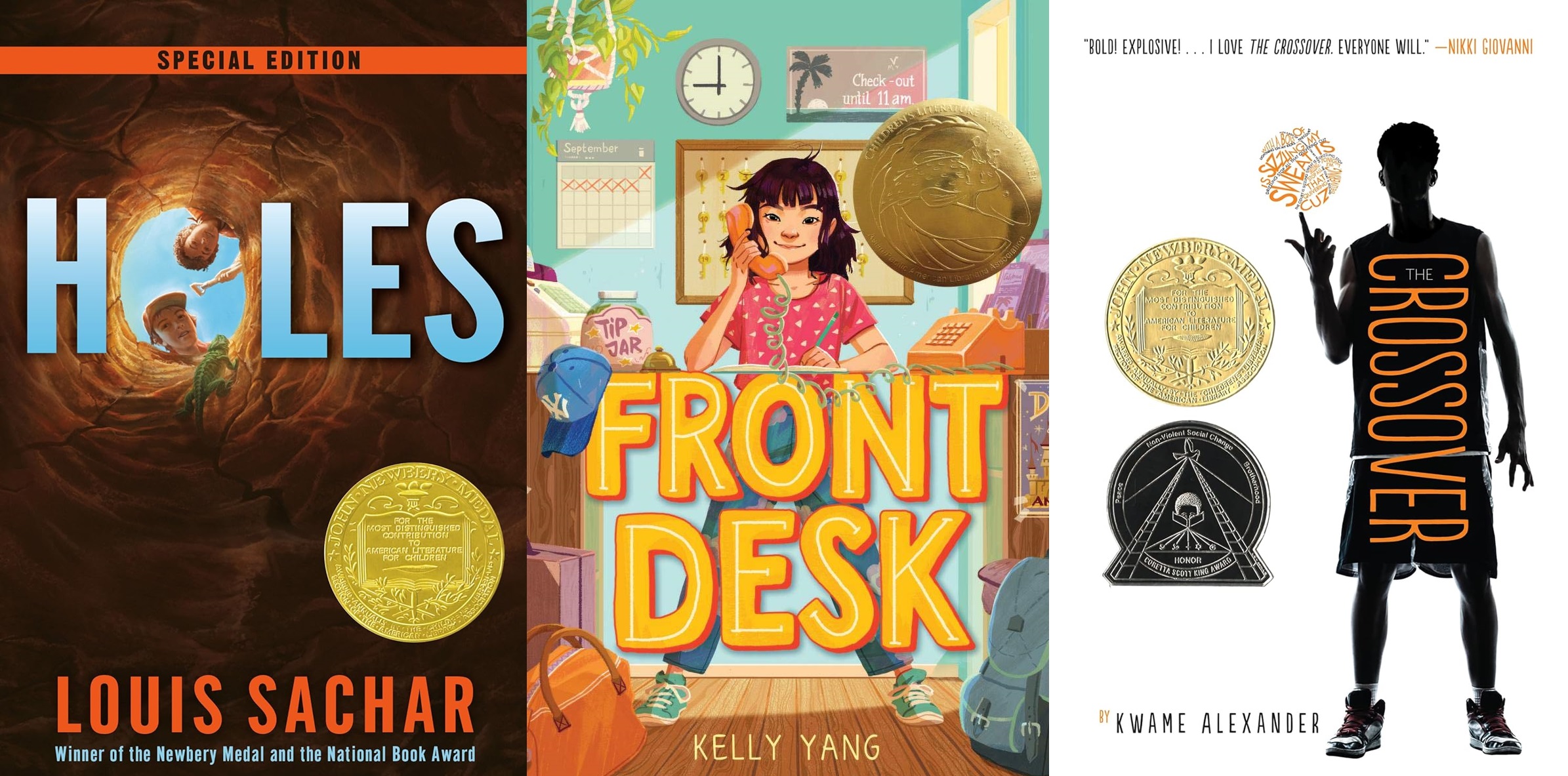
“Holes” by Louis Sachar
A unique story intertwining the fate of troubled youth Stanley Yelnats and the mystery of Camp Green Lake, Sachar’s novel has captured readers for decades.
“Front Desk” by Kelly Yang
Mia Tang’s experiences helping her parents manage a motel and navigating the challenges of immigrants offer a poignant look at resilience and determination.
“The Crossover” by Kwame Alexander
Written in verse, this compelling story highlights the bond between twin brothers and their love for basketball amidst family dynamics and personal growth.
Realistic Fiction Series and Graphic Novels
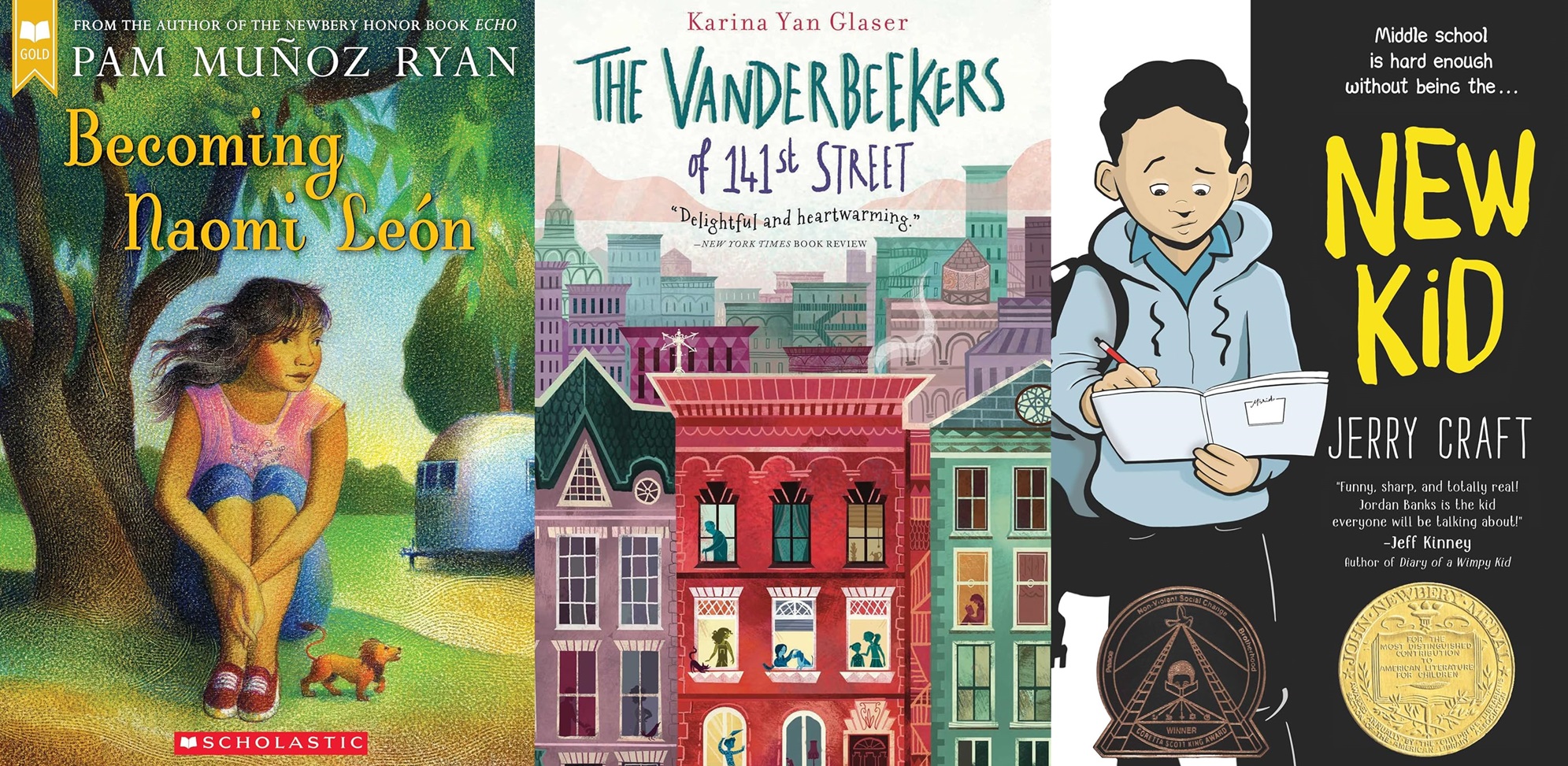
“Becoming Naomi Leon” by Pam Muñoz Ryan
A touching story about a young girl’s struggle to find her voice and her reunion with her estranged mother, this book is celebrated for its emotional depth.
“The Vanderbeekers of 141st Street” by Karina Yan Glaser
Through the eyes of the Vanderbeeker siblings, readers explore themes of community and family as they try to save their beloved Harlem home.
“New Kid” by Jerry Craft
As a graphic novel, “New Kid” insightfully depicts the challenges faced by seventh-grader Jordan Banks as he starts at a new school where diversity is low and expectations are high.
Listed among the best realistic fiction books for kids on Goodreads, these titles offer a diverse array of perspectives and experiences, giving young readers a chance to see themselves through the characters and stories they love.
Important Themes in Kids’ Realistic Fiction
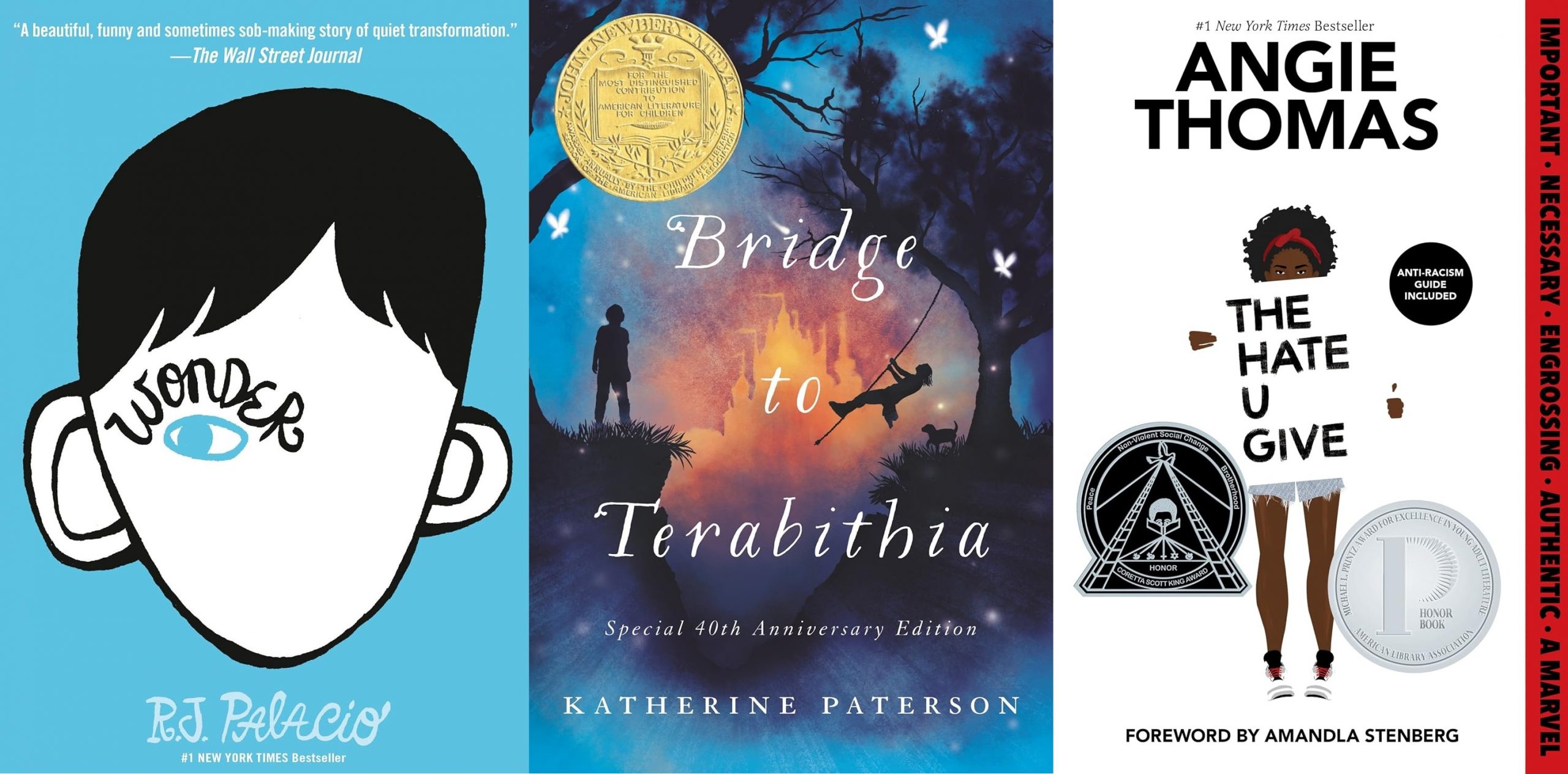
Realistic fiction books for kids often explore complex themes that resonate with their experiences and growth. These reads can facilitate empathy, nurture identity, and encourage understanding of social diversities.
Coming-of-Age and Growing Up
As children navigate the intricacies of maturing, middle grade books like “Wonder” by R.J. Palacio, often center on characters confronting the challenges of adolescence. Chapter books in this subgenre reflect the characters’ internal and external journeys, evolving from innocence to a more complex understanding of their world. Topics like moving to a new town or starting at a new school are common catalysts for growth.
Family, Friendship, and Relationships
Within the pages of kids’ realistic fiction, the dynamics of family ties, friendship, and relationships are meticulously unpacked. Novels like “Bridge to Terabithia“ by Katherine Paterson cast light on forming lasting friendships and the rules that govern these relationships, while also managing family expectations and connections. The theme of friendship is pivotal, highlighting the joys and struggles that come with making and keeping friends.
Diversity, Identity, and Social Issues
Authors of realistic fiction for kids don’t shy away from diving into themes of diversity and identity as well as current social issues. Books such as “The Hate U Give“ by Angie Thomas address racism directly, offering readers a lens through which to understand complex societal problems. Characters in these stories often struggle with questions of identity, with some, like the protagonist in “Starfish“ by Lisa Fipps, combating bullying and finding self-acceptance.
Selecting Books for Different Age Groups
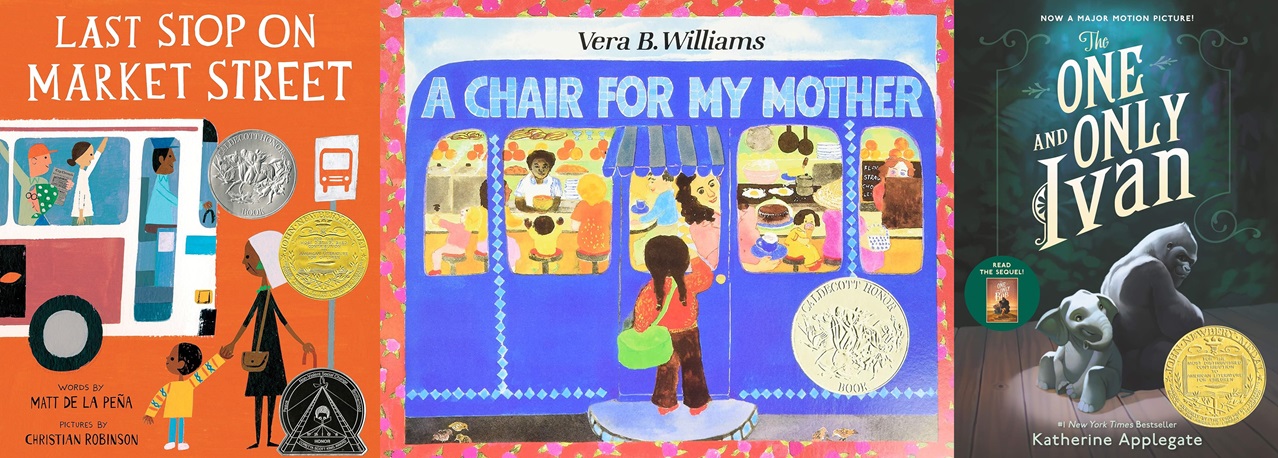
When choosing realistic fiction for children, one should consider age-appropriate content and complexity. Developmental stages vary, and picking suitable books can significantly enhance a child’s reading experience.
Picture Books for Young Readers
Kindergarten and young readers often benefit from picture books, which blend simple narratives with engaging illustrations. These books typically don’t contain more than a few sentences per page. Titles such as “Last Stop on Market Street” and “A Chair for My Mother” offer relatable stories that support understanding through visual context.
Chapter Books for Middle Graders
For middle grade readers, chapter books present more complex narratives with fewer illustrations. These books serve as a bridge between picture books and more advanced literature. They usually are written with readers between the ages of 8 and 12 in mind. “The One and Only Ivan” and “Because of Winn-Dixie” provide compelling stories with age-relevant themes.
Novels Suitable for Tweens and Young Teens
As tweens and young teens mature, they can engage with novels that delve deeper into characters and plot without relying on illustrations. Novels such as “Wonder” and “Holes” focus on more sophisticated topics that resonate with their experiences, encouraging empathy and self-reflection. These novels often portray challenges and triumphs that can leave a lasting impact on young readers.
Guides and Resources for Parents and Educators
Choosing the right realistic fiction books for children can empower and educate them. This section offers practical tools for educators and parents to effectively incorporate these books into learning and leisure.
Using Realistic Fiction in the Classroom
In the classroom, teachers employ literary guides and educational resources to enhance comprehension and engagement with realistic fiction. Curated book lists serve as a starting point, featuring bestsellers and compelling stories that mirror real-life situations. Educators may integrate audiobooks to support diverse learning needs, offering a dynamic alternative to traditional reading that can benefit all students, including the gifted.
Example Lesson Plan:
- Objective: To analyze character development in realistic fiction
- Materials: Literary guides, featured realistic fiction novels, audiobook versions
- Activities:
- Group discussion on the protagonist’s journey
- Individual journal entries reflecting on personal connections
- Listening to select audiobook passages, followed by a comprehension quiz
Recommending Age-Appropriate Books
Parents seeking age-appropriate realistic fiction can refer to carefully compiled book lists that categorize titles by reading level and maturity. These resources often include educational insights and annotations to help select books that align with a child’s capabilities and interests. Bookstores and libraries might offer themed displays that highlight recommended books or organize literary events centering around robust selections of realistic fiction.
Resource Table:
| Age Range | Book Recommendations | Educational Benefit |
|---|---|---|
| 8-10 | List of beginner-level bestsellers | Fosters empathy and social skills |
| 11-13 | Selection of novels for intermediate readers | Encourages critical thinking |
| 14+ | Curated collection for advanced young adults | Develops advanced literacy and analysis |
Teachers and parents can adapt these resources to suit the educational goals for their children or students.
Incorporating Realistic Fiction into Reading Habits
Realistic fiction books for children are a crucial tool for both education and entertainment. They present relatable stories that allow young readers to see themselves and the world around them.
Tips for Encouraging Regular Reading
- Establish a Routine: Encourage children to read one chapter of a realistic fiction book each night. Series are particularly effective as they often end with cliffhangers that make readers eager for more.
- Create a Reading Space: Dedicate a comfortable and quiet corner specifically for reading. A well-lit nook with easy access to a shelf of various chapter books can be inviting.
- Use Technology: Utilize audiobooks as an alternative, especially for children who are auditory learners or for those who may struggle with traditional reading.
Discussion and Analysis of Books
- Book Clubs: Start a book club where children can discuss the events and characters of the realistic fiction they read. This can foster deeper understanding and enjoyment.
- Parental Involvement: Parents should participate in discussing storylines, which can enhance comprehension and emotional connection to the material.
By integrating these strategies, caregivers and educators can help develop a love for reading in children, using realistic fiction as a gateway to lifelong reading habits.
The Role of Realistic Fiction in Developing Literacy
Realistic fiction plays a crucial part in advancing children’s literacy by providing relatable content and stimulating emotional intelligence. The genre’s focus on everyday experiences and plausible events allows young readers to reinforce their language skills and enhances their ability to understand complex social dynamics.
Enhancing Vocabulary and Understanding
Realistic fiction introduces children to a diverse vocabulary, depicting an array of characters, settings, and situations that reflect real life. Characters speak in a language that resonates with the reader’s world, making the introduction of new words more natural and memorable. For instance, a story might describe a character’s encounter with various flora, using specific terms like ‘perennial’ or ‘deciduous’, thus providing a context that aids comprehension and retention.
- Contextual Learning:
- Words: Perennial, Deciduous
- Application: Recognizing plant types
Children also encounter complex sentences and a variety of linguistic structures. They process and understand the narratives, which feature events and reactions that could occur in their own lives, compelling them to navigate through the text and grasp nuanced meanings.
Empathy and Real-world Connections
The genre fosters empathy by allowing children to experience the world through the eyes of others. Characters dealing with challenges similar to those the readers might face – such as moving to a new school or handling family issues – help youngsters develop emotional intelligence and an understanding of human relationships.
- Empathy Development through Story Events:
Event in Story Empathy Aspect Developed Character being bullied Compassion for peers Family strife Sensitivity to familial bonds
Moreover, these connections extend to real-world applications. When children relate to the characters and the events they face, it provides a safe space to explore their own reactions and decisions, reinforcing critical thinking and problem-solving skills. By actively engaging with realistic fiction, they not only empathize but also subconsciously apply these insights to their own environments.
Connecting with Realistic Fiction Authors
Readers looking to deepen their appreciation for realistic fiction can enrich their experience by engaging with authors. Author interviews offer personal insights, while author communities provide interactive opportunities for fans.
Author Interviews and Insights
R.J. Palacio, the author of “Wonder”, often shares her experiences and inspirations in interviews. Readers can learn about her writing process and the challenges she faced when crafting her characters. Similarly, interviews with Kate DiCamillo, known for “Because of Winn-Dixie”, reveal her approach to storytelling and her ability to tackle complex themes with simplicity and grace.
Beverly Cleary has been celebrated for her relatable characters like Ramona Quimby. Her discussions highlight the ways she has seamlessly captured the essence of childhood through decades of writing. Fans of Jeanne Birdsall‘s “The Penderwicks” series can find numerous interviews where Birdsall discusses the creation of her charming and realistic familial relationships.
Interviews with authors like Ann M. Martin, famous for “The Baby-Sitters Club” series, provide insights into her development of diverse and dynamic characters that resonate with readers. Andrew Clements‘ fans can discover the author’s thoughts behind beloved books such as “Frindle“, often uncovering the motivations behind his depiction of school life and creativity in children.
Getting Involved in Author Communities
| Author | Community Example |
|---|---|
| R.J. Palacio | Online book clubs discussing “Wonder” |
| Beverly Cleary | Forums dedicated to the “Ramona” series |
| Kate DiCamillo | Social media pages for fans |
| Ann M. Martin | “The Baby-Sitters Club” groups on social media |
| Andrew Clements | Educator communities engaging with his works |
| Jeanne Birdsall | Fan-run “The Penderwicks” reading groups |
Enthusiasts of these authors have created communities on various platforms, from social media to dedicated forums, where they can discuss the books, share fan art, and sometimes even interact with the authors themselves. For instance, Ann M. Martin and Kate DiCamillo have been known to engage with readers through social media platforms by answering questions and sharing updates. Other communities, such as those for Beverly Cleary‘s works, might organize read-alongs or memorial posts that celebrate her legacy.
Book-centric platforms often feature discussions where fans dissect Andrew Clements‘ ability to portray school environments with authenticity. Jeanne Birdsall‘s loyal readers might share personal stories of how “The Penderwicks” has impacted their lives, fostering a sense of connection and community.
By participating in these communities, fans not only connect with the authors’ works on a deeper level but also with fellow readers who share their passion for realistic fiction.
Additional Resources and Features in Realistic Fiction
Realistic fiction books for kids often incorporate various resources and features to enhance the reading experience. These include multimedia elements and supplementary materials which serve to deepen understanding and engagement.
Multimedia and Interactivity in Books
Realistic fiction titles for children sometimes feature multimedia components, such as audio narration, which can be tremendously beneficial for auditory learners or children with reading difficulties. Graphic novels are a prime example, merging vivid visuals with text to tell compelling stories that resonate with visual learners.
- Audiobooks in realistic fiction expand accessibility, allowing kids to enjoy stories during car rides or through their headphones.
- Interactive books may include features like clickable text or sounds that engage readers and provide a more dynamic reading experience.
Supplementary Materials and Discussion Guides
Many realistic fiction books come with supplementary materials, which typically include:
- Discussion questions: To encourage critical thinking and discussion, either in the classroom or at home.
- Activities: Often related to themes within the book, these activities help readers apply what they’ve learned.
Discussion guides, particularly in books featured in classroom curricula, play a vital role in facilitating conversations about the book’s themes. Poetry included in realistic fiction can serve as a powerful tool, providing a rhythmic and emotionally resonant perspective on the story’s themes. They can be especially useful to teachers and parents looking to foster a deeper understanding of the content.
Buying and Accessing Realistic Fiction for Kids
Parents and educators seeking to purchase realistic fiction books for children have several options at their disposal. Bookstores often have a dedicated section for children’s literature, where bestsellers and new releases are highlighted. Consulting with bookstore staff can provide valuable recommendations tailored to specific age groups and interests.
Libraries are a cost-effective resource, offering a vast selection of children’s realistic fiction. They provide an opportunity for kids to explore various titles and series without the commitment of purchase. Most libraries also have online catalogs, making it easy for readers to check the availability of books before visiting.
When considering convenience, online retailers are a popular choice. Customers can browse and buy books from the comfort of their home. Websites usually display user reviews, which can help determine the suitability of a book for a child. Below is a simplified chart summarizing how to access realistic fiction for kids:
| Method | Pros | Cons |
|---|---|---|
| Bookstores | Personalized recommendations, instant access | Limited stock, variable prices |
| Libraries | Free access, variety | Waiting times for popular books |
| Online Retailers | Convenient, often have reviews and discounts | Shipping times, less personal interaction |
For those interested in supporting content creators directly, using affiliate links to purchase books could be a good option. Content creators typically receive a commission for books bought through these links. This not only benefits the creator but also can lead buyers to curated selections of recommended books that have been vetted for quality and relevance.
In sum, whether one chooses the tactile experience of a bookstore, the community hub of a library, or the digital storefront of an online retailer, multiple avenues exist for acquiring realistic fiction titles that will captivate and engage young readers.
Conclusion and Final Recommendations
Realistic fiction offers children a window into the experiences of others, fostering empathy and enhancing the joy of reading. These stories can be powerful tools in a young reader’s life, providing comfort, excitement, and a deeper understanding of the world.
Top Picks for Young Readers:
- Elementary Readers: “Because of Winn-Dixie” by Kate DiCamillo
- Middle Grade Readers: “Wonder” by R.J. Palacio
- Advanced Young Readers: “The Outsiders” by S.E. Hinton
Children gravitate towards stories that resonate with their own lives. Realistic fiction meets this need by presenting characters and situations that kids can relate to or learn from. The selected books are known for their relatable characters, engaging plots, and the ability to present complex themes in an accessible way.
Key Benefits:
- Encourages empathy and understanding.
- Promotes problem-solving and critical thinking.
- Provides a safe exploration of emotions and experiences.
For those seeking to expand their library, consider diverse authors and storylines to provide a well-rounded view of the world. Young readers benefit from seeing themselves and others in the stories they read. Librarians, educators, and parents can guide children to selections that will challenge and inspire them.
In stocking shelves and curating reading lists, prioritize variety and quality storytelling. Aim to include books that have received positive reviews for both their literary merit and their ability to captivate young audiences.

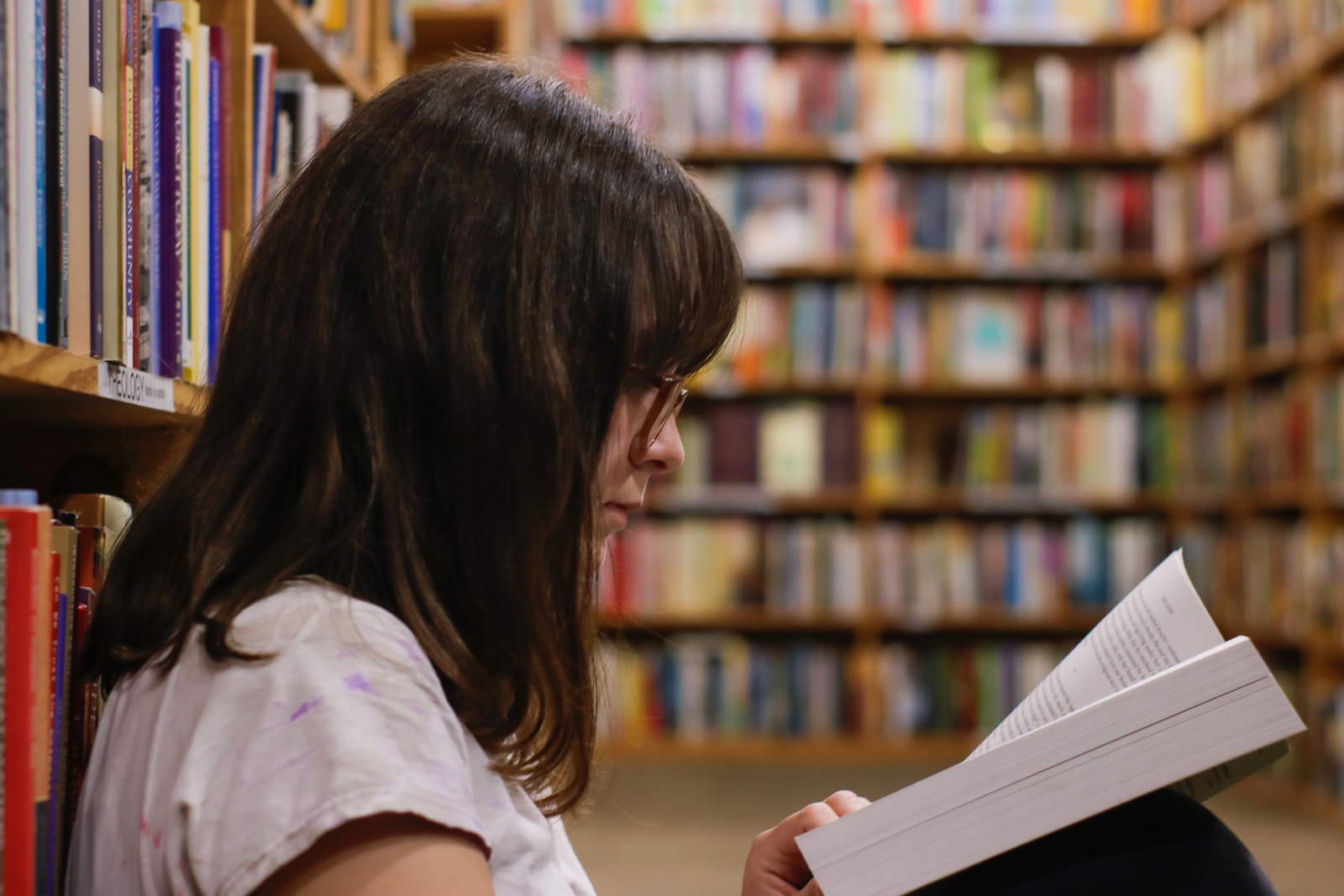
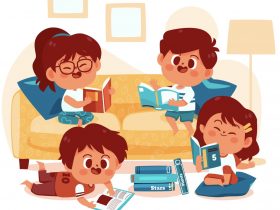
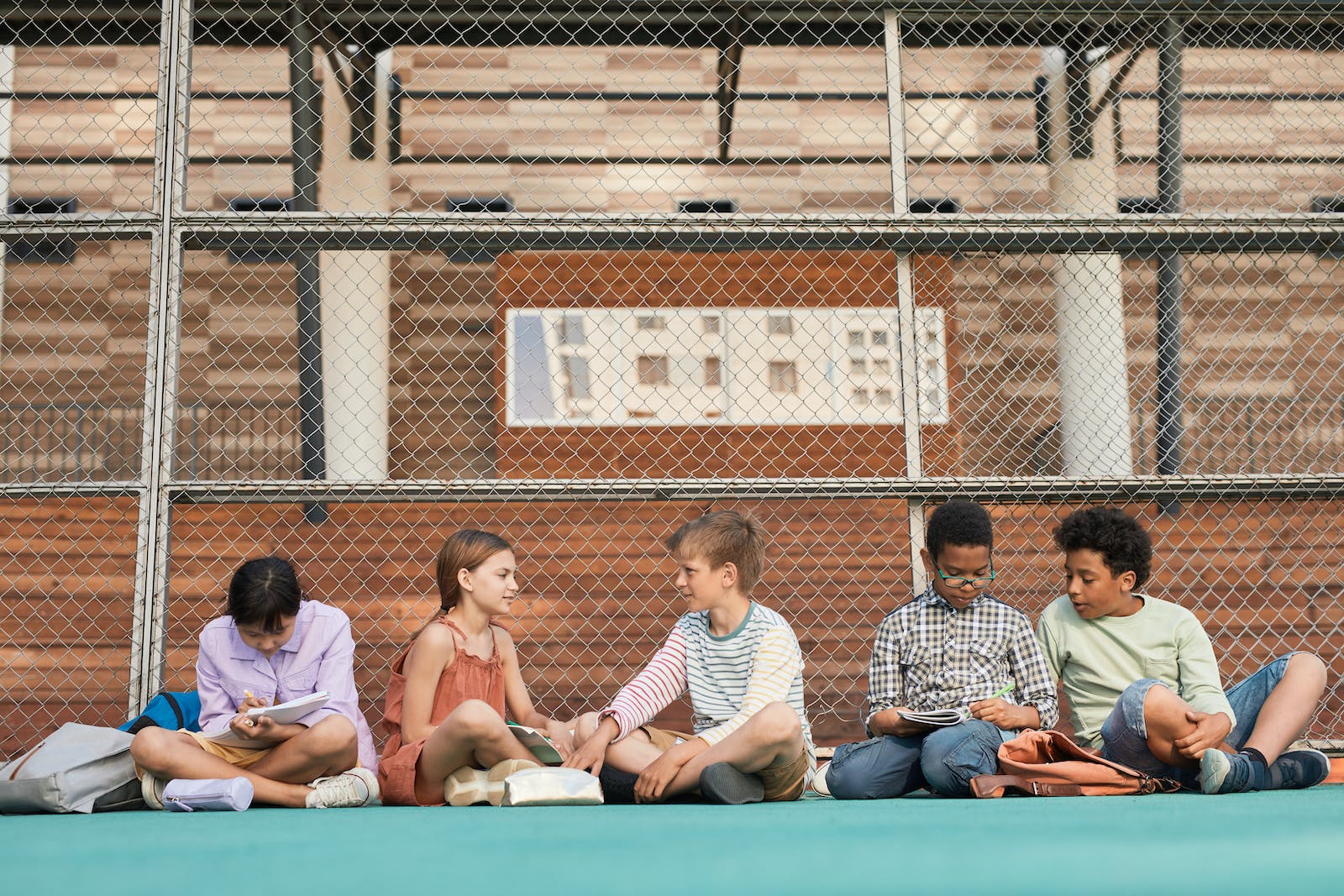
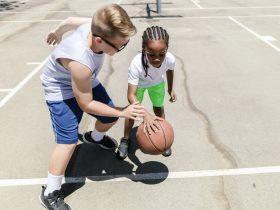

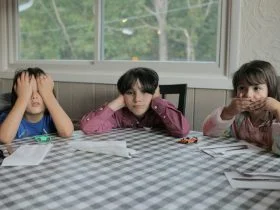

Leave a Reply
View Comments